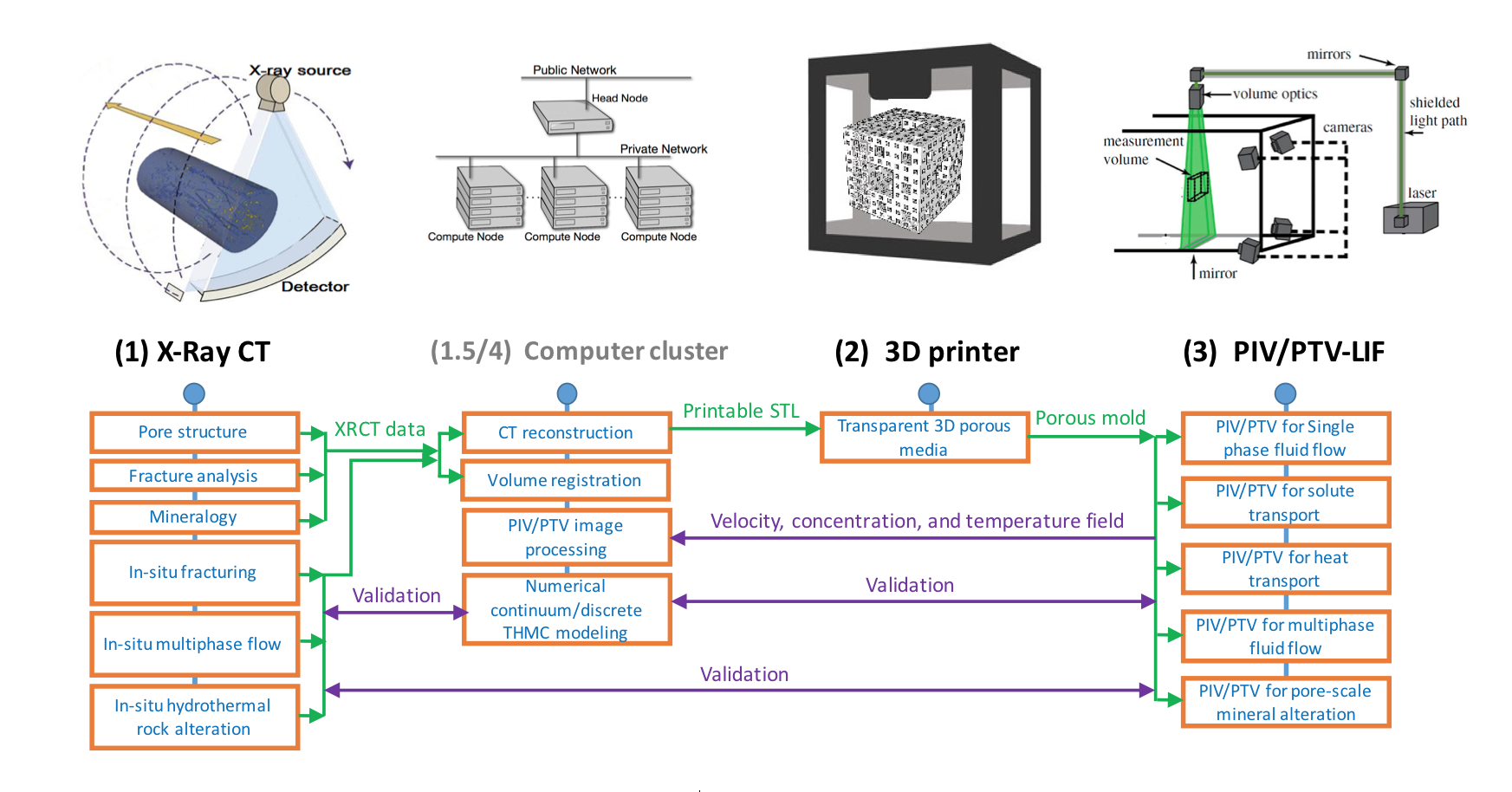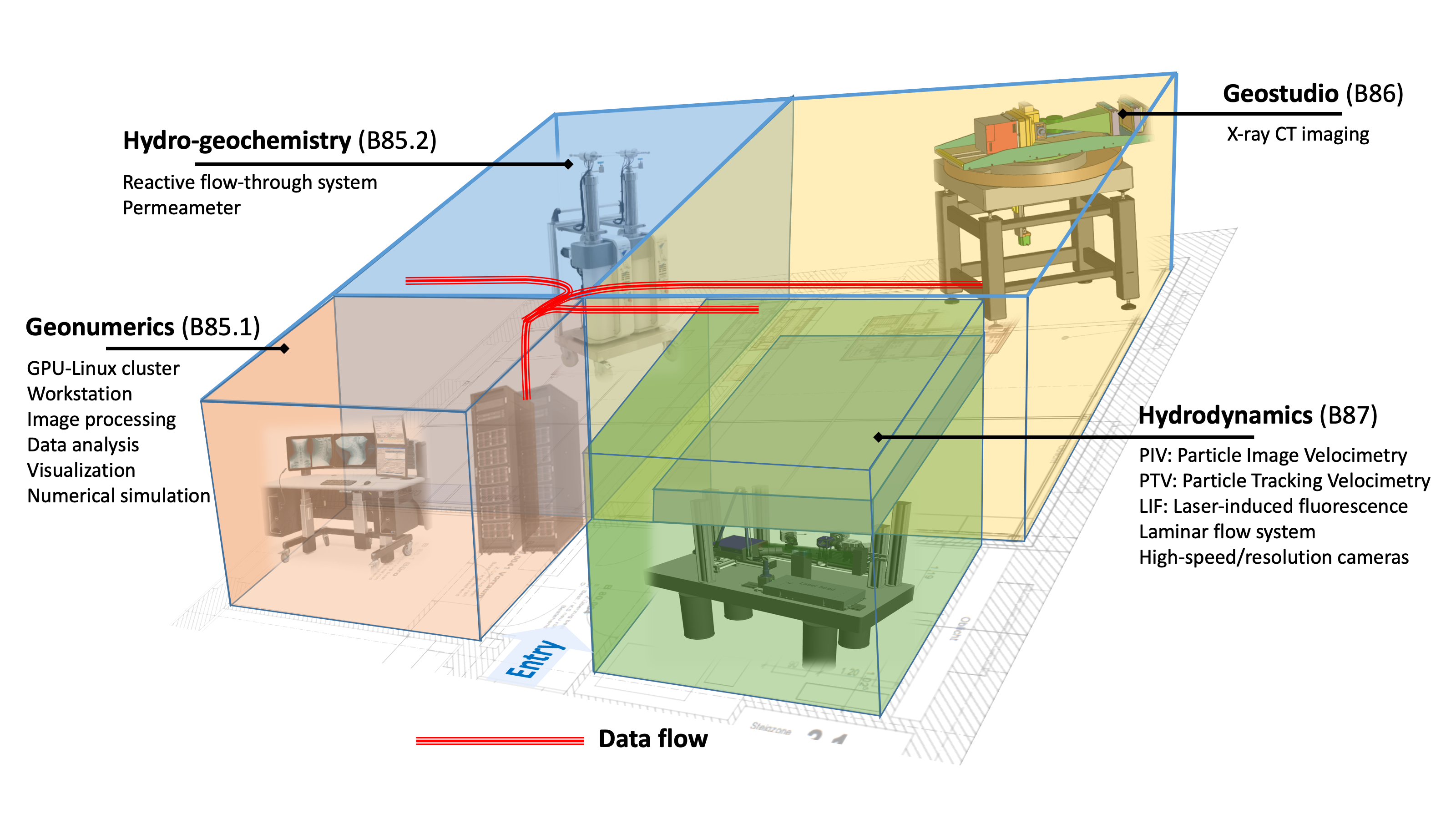Prof. Martin O. Saar, ETH Zurich
1 January 2018
SNF R’Equip 206021_177031
Prof. Martin O. Saar, ETH Zurich
Description
Introduction
 Workflow of the GREAT Visualization Lab
Workflow of the GREAT Visualization Lab
Scientific knowledge is based on quantitative observations of physical, chemical, etc. processes, often observed in laboratory experiments that test scientific theories. It is thus critically important to be able 1) to conduct controlled experiments (where one controls for all supposedly known parameters) to gain insights into the unknown and 2) to observe (via data collection) the experimental outcome. Up till now, it has been extremely difficult to visualize 3D time-series (i.e., 4D) data during laboratory experiments that investigate reactive transport through a porous and/or fractured medium at sufficient spatial and temporal resolutions, because the processes of interest occur (deep) inside the medium of interest. In the past, X-Ray Computed Tomography (XRCT) and other techniques (e.g., Magnetic Resonance Imaging) have been used to visualize data inside materials, however, spatial and/or temporal resolutions are typically poor.
We propose to acquire a real-time, high spatial- and temporal-resolution optical data acquisition system for visualization of multiphase reactive transport in three-dimensional (3D) porous/fractured geologic (and other) media. Together with the necessary support equipment (an in-situ-reaction-capable X-Ray Computed Tomography (XRCT) scanner and a specialized 3D printer), this system constitutes our Geosystem REActive Transport (GREAT) Visualization Lab, a groundbreaking laboratory that is, to our knowledge, worldwide unique: While each of the individual units (1-3) outlined in the Figure has unique components, particularly Units (1) and (3), that are necessary to make the entire GREAT Visualization Lab work, the particularly unique aspect of the overall lab is the combination of these units. This combination and associated workflow enables new research opportunities regarding reactive transport in porous and/or fractured media, as often encountered in geothermal, subsurface nuclear/CO2-waste storage, and groundwater systems as well as in many other (geo-)science and engineering fields.



